Family: Orchidaceae •
Genus: Brassavola x Cattleya x Laelia x Sophronitis •
Species: N/A •
Country of Origin: N/A •
Common Names: Potinara Burana Beauty 'Burana', HCC/AOS •
Potinara, abbreviated Pot. in horticultural trade, is an intergeneric hybrid of orchids, with Brassavola, Cattleya, Laelia and Sophronitis as parent genera. This hybrid is a real beauty with yellow flowers with a maroon stripe and as a bonus they're nicely fragrant. The weird thing is that the flowers are oriented upside-down on the spike as you can see in the fourth picture. I picked this up at the Fort Lauderdale Orchid Society's annual show and sale back in 2004. I left it on the windowsill last night and there must have been thunderstorms. This morning I found it on the ground with the pot shattered, but I already re-potted it, no harm done!
Potinara Burana Beauty 'Burana', HCC/AOS by Eric Bronson is licensed under a Creative Commons Attribution-Noncommercial-No Derivative Works 3.0 United States License.
Based on a work at www.flickr.com.
Saturday, August 30, 2008
Potinara Burana Beauty 'Burana', HCC/AOS
Posted by Eric Bronson at 7:23 AM 0 comments
Labels: orchidaceae, orchids
Tuesday, August 26, 2008
Cassius Blue Leptotes cassius



I found this tiny little guy on my Carambola tree. It's only about .75 to 1.0 inches overall. It's white below (ventral) with brownish spots and you can see the two small orange rimmed blue eye-spots. What I couldn't get a picture of is the top (dorsal) view which is purplish-blue! One of their larval food is Plumbago which is over used and found in almost every garden here. They also like Wild Tamarind, Leadwort, Blackbead and Milk Peas et al.
The Cassius Blue is abundant throughout south Florida but occasionally disperses northward beyond the state's border. Many of these isolated records, however, may be the result of immature stages of the butterfly "piggybacking" on shipments of the popular landscape plant, Plumbago, to various commercial nurseries.
excerpt from 'Butterflies of Florida Field Guide' by Jaret C. Daniels
Cassius Blue by Eric Bronson is licensed under a Creative Commons Attribution-Noncommercial-No Derivative Works 3.0 United States License.
Based on a work at www.flickr.com
Posted by Eric Bronson at 6:54 AM 1 comments
Labels: butterfly, lycaenidae
Monday, August 25, 2008
Dendrobium peguanum
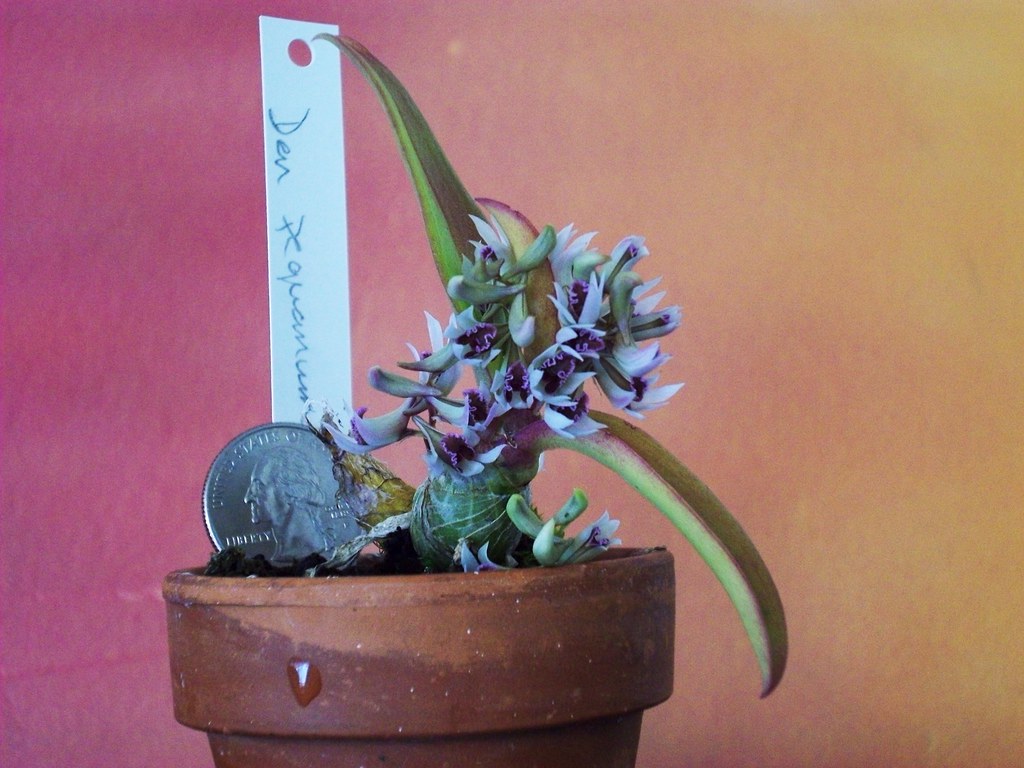
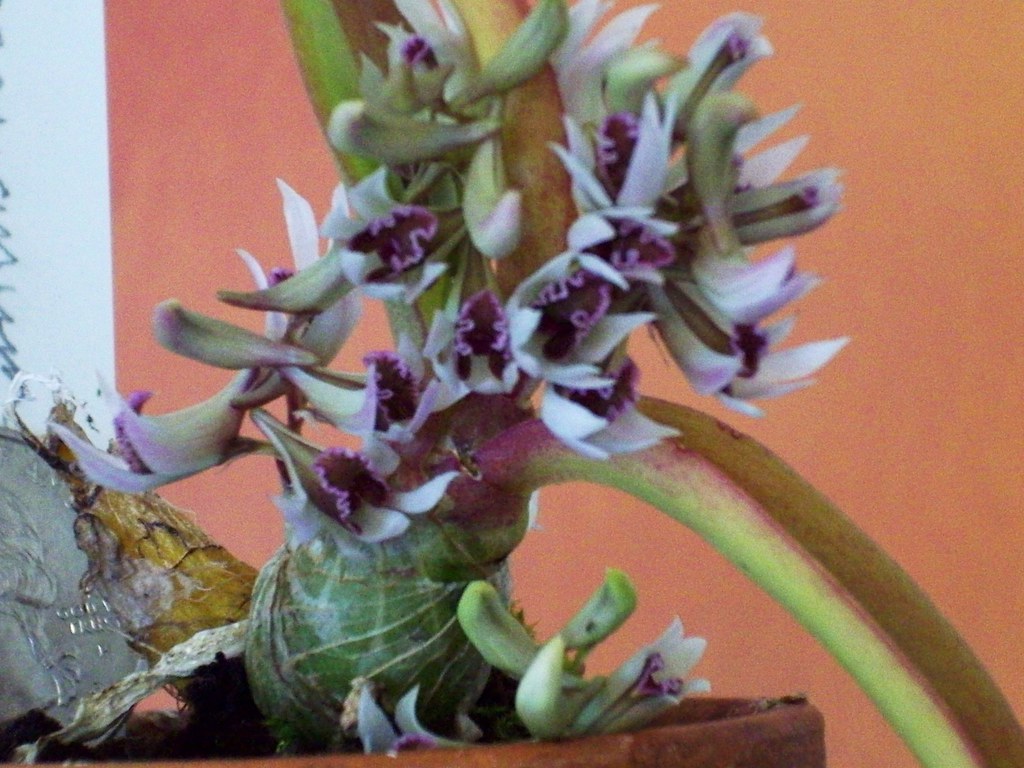
Family: Orchidaceae •
Genus: Dendrobium •
Species: peguanum (Lindl.)(1859)•
Country of Origin: Thailand •
Common Names: •
This was one of my mini orchids that (I'm ashamed to say) died this year. I must have killed it with kindness, that happens some times. Even the best gardeners fail. If I see it again I will buy it. It was a nice little miniature. The lightly fragrant little flowers reminded me of how clover smells. Please click the pictures to view in the large format.
Dendrobium peguanum is a delightful miniature from India, Thailand and Burma. It grows as a lithophyte or epiphyte and is characterized by short, stout pseudobulbs with 2 to 4 leathery, deciduous leaves. Many small, fragrant flowers are produced on leafless canes in winter. When not in growth, water should be reduced and fertilizer eliminated until the new cycle begins.
excerpt from http://www.orchidworks2.com/
Dendrobium peguanum by Eric Bronson is licensed under a Creative Commons Attribution-Noncommercial-No Derivative Works 3.0 United States License.
Based on a work at www.flickr.com.
Posted by Eric Bronson at 9:21 AM 1 comments
Labels: orchidaceae, orchids
Sunday, August 24, 2008
Zephyranthes candida

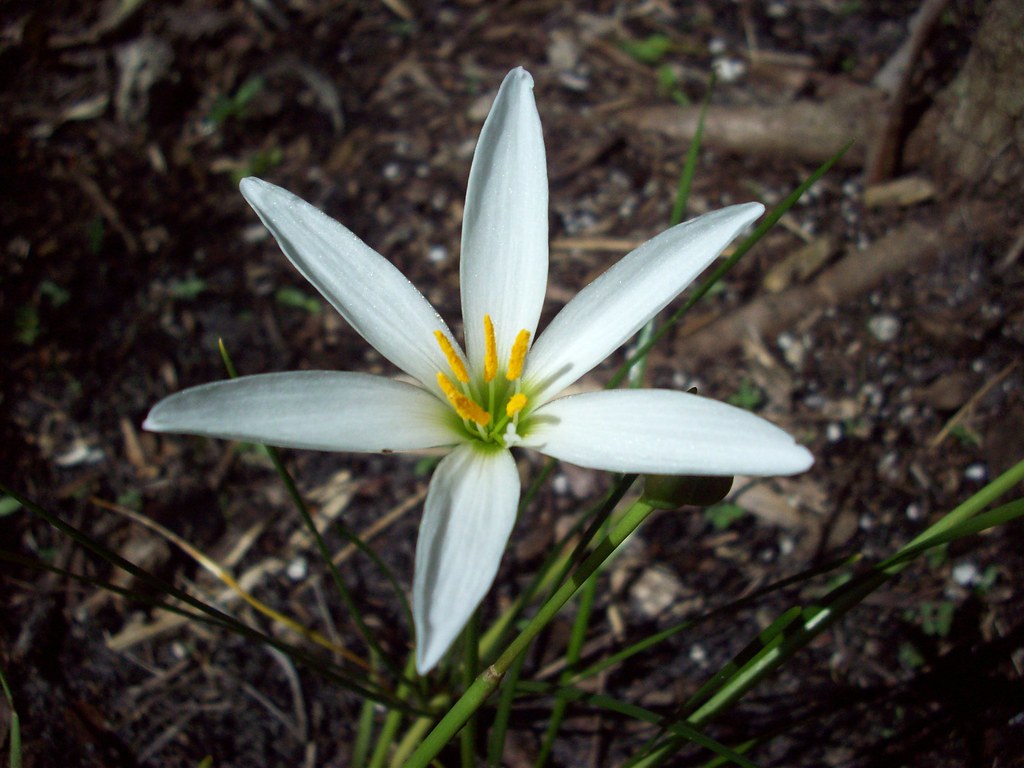
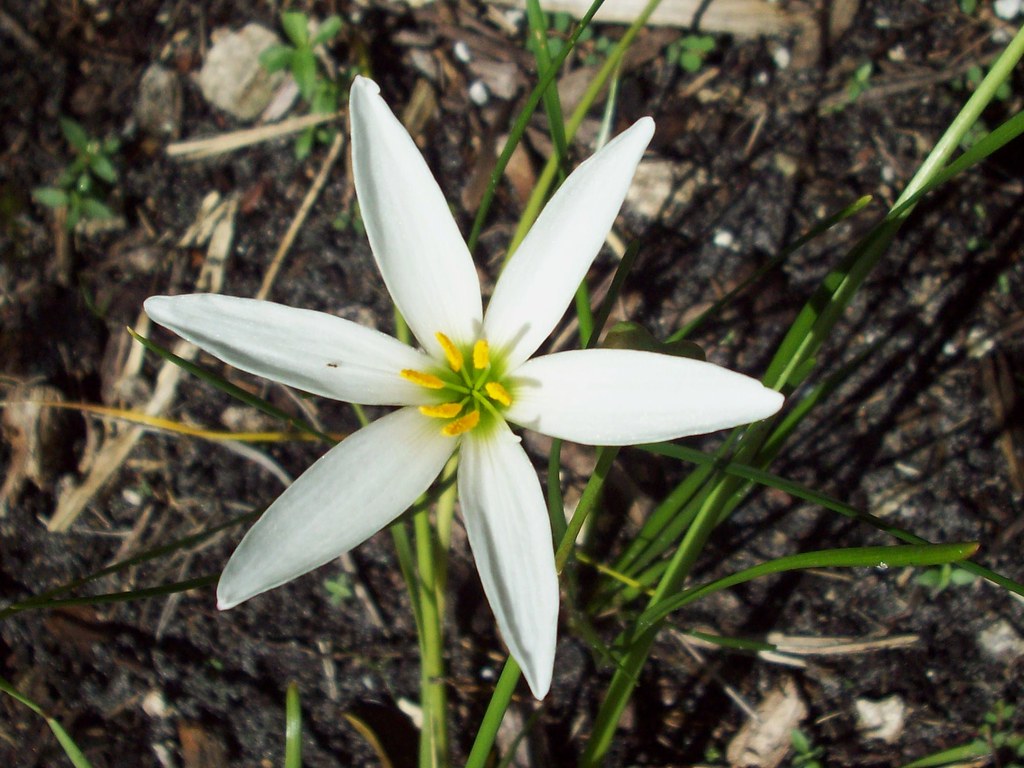
 Last picture here is of Z. candida & Z. citrina they're both blooming right now!
Last picture here is of Z. candida & Z. citrina they're both blooming right now!
Family: Amaryllidaceae •
Genus: Zephyranthes •
Species: candida (Herbert)(1821)•
Country of Origin: Argentina and Uruguay •
Common Names: Rain-lily, Fairy-lily, Zephyr-lily •
Here's another of the Zephyranthes sp. that I talked about in my previous Zephyranthes post.
This is a white form which I'm 99.9% sure is Z. candida. What a beautiful flower, I love these little plants which are related to Amaryllis. I still have two more species that haven't bloomed yet a pink form Zephyranthes simpsonii and an unknown species (It hasn't flowered yet so I haven't been able to id it!). I'll post those when they bloom.
the Pacific Bulb Society has alot of info and pictures of all the different species.
www.pacificbulbsociety.org
Zephyranthes candida by Eric Bronson is licensed under a Creative Commons Attribution-Noncommercial-No Derivative Works 3.0 United States License.
Based on a work at www.flickr.com
Posted by Eric Bronson at 11:34 AM 3 comments
Labels: amaryllidaceae, rain lilies
Friday, August 22, 2008
Froggy the Hitchhiker
This little guy decided to ride out Tropical Storm Fay inside with my plants. If you look carefully at the first picture you can see another set of little eyes from inside the roots. It's called a Greenhouse frog Eleutherodactylus planirostris (Cope 1862)
Thanks to Mr & Mrs Apteryx australis @ www.flickr.com/people/dakluza/ for a speedy proper Id. I confirmed that here nis.gsmfc.org/nis_factsheet.php?toc_id=205
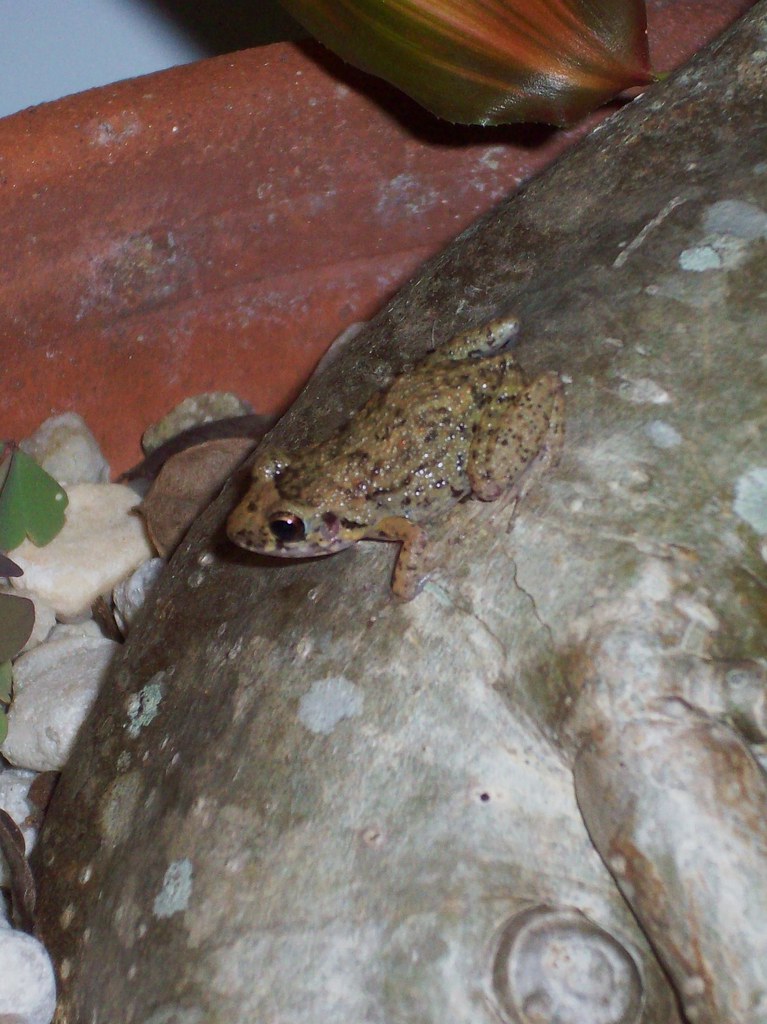
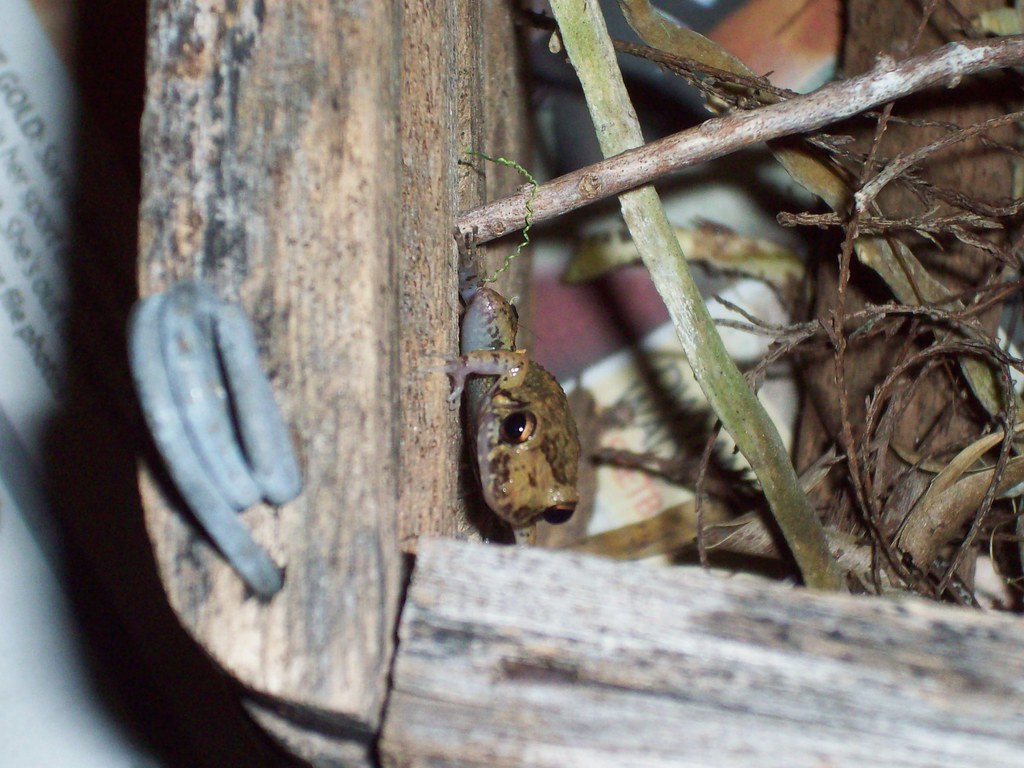
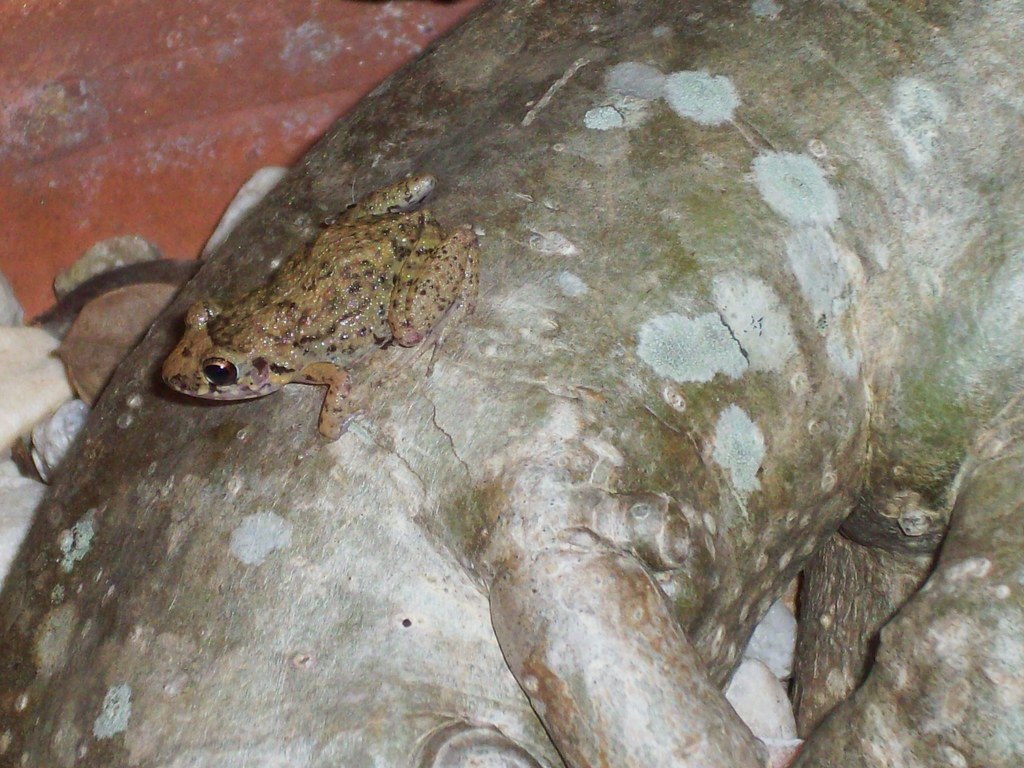
Description:
Greenhouse frogs are brown with distinct reddish tones. The tip of the snout is red and there is usually a black interorbital blotch (Dundee and Rossman, 1989). The legs are banded with brown. The eyes are reddish and the belly is white. The vomerine teeth are in transverse series behind the internal nares. The toepads are truncated. The toes are long and slender with strongly developed tubercules at the joints and terminal disks. The toes lack webbing (Wright and Wright, 1949; Behler, 1979; Dundee and Rossman, 1989; Conant and Collins, 1991). They have somewhat of a pointed nose (Carmichael and Williams, 1991). There are two morphs, a striped morph with longitudinal light stripes, and a mottled morph with irregular dark and light markings (Behler, 1979; Ashton and Ashton, 1988; Dundee and Rossman, 1989; Conant and Collins, 1991). From a total of 211 specimens collected in Miami, and the upper and lower Keys, Duellman and Schwartz (1958) found the mottled morph to be consistently more common (ranging from 55.9 to 71.6% of the specimens) than the striped morph (ranging from 28.4 to 44.1% of the specimens) in each area.
Biology:
Greenhouse frogs are mostly terrestrial and nocturnal, seeking shelter by day beneath boards, leaves, trash, or other debris where there is moisture. Their call is a faint cheep repeated one to four times. Their voice resembles that of an insect. They call at night or during rains usually from April to September in Florida (Ashton and Ashton, 1988). They thrive in altered areas and are commonly found in greenhouses, gardens, junk yards, and also occur in moist wooded areas and gopher tortoise burrows (Carmichael and Williams; Conant and Collins, 1991).
excerpt from http://nis.gsmfc.org/nis_factsheet.php?toc_id=205
Froggy the Hitchhiker by Eric Bronson is licensed under a Creative Commons Attribution-Noncommercial-No Derivative Works 3.0 United States License.
Based on a work at www.flickr.com
Posted by Eric Bronson at 8:00 AM 0 comments
Labels: frogs, leptodactylidae
Thursday, August 21, 2008
Photos of Fairchild Tropical Botanic Garden part II
These pictures are all from earlier in the year when it wasn't 100f degrees! I try to go at least ever other weekend when it's nice out. If you ever come to Miami be sure to plan a trip to Fairchild Tropical Botanic Garden
Welcome to Fairchild.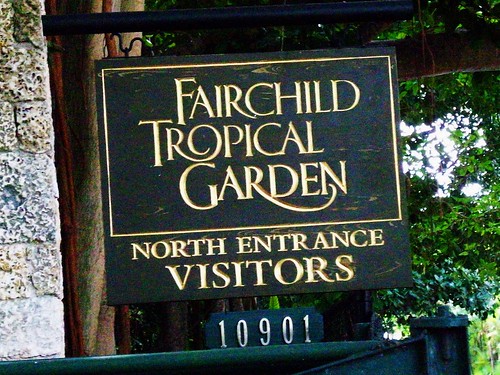
Musella lasiocarpa this beauty is a relative to bananas.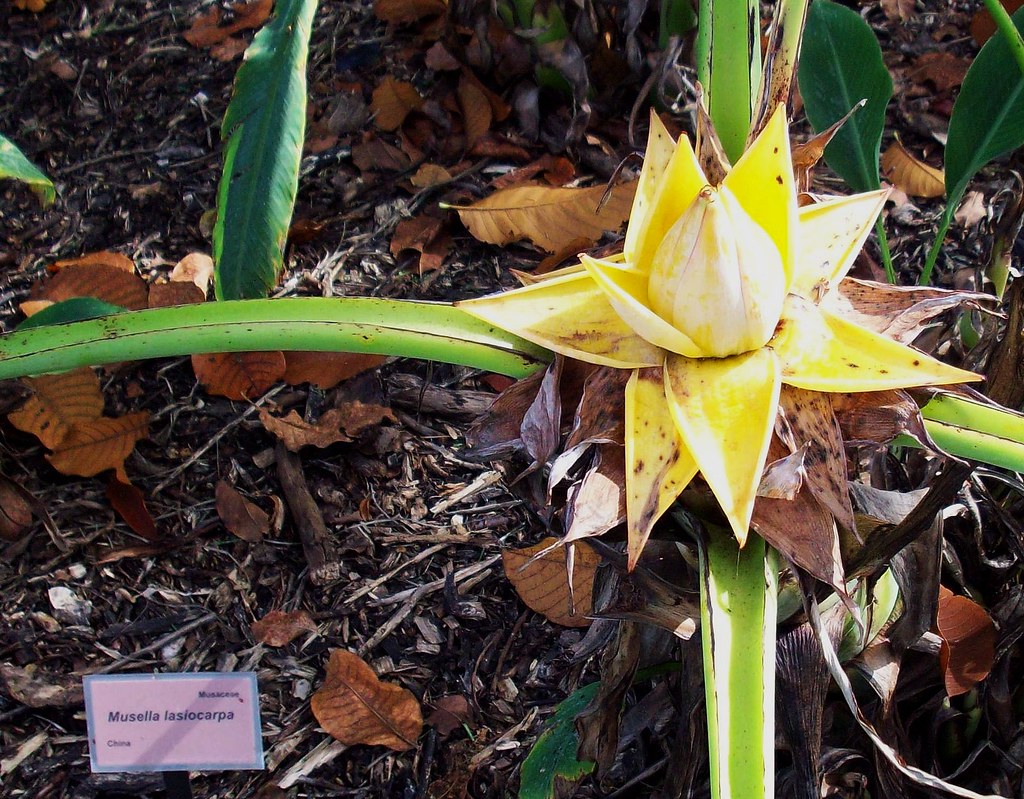
Baobab Adansonia digata planted in 1939! One of the original plantings. AMAZing!!!!
Couroupita guianensis Better know as Cannonball Tree.
Bromeliads Achemea "Blue Tango" and another hybrid(?)
Eucalyptus deglupta or Rainbow Eucalyptus
Albizia niopoides Thanks to the jerk who thought it would be ok to walk into my field of vision!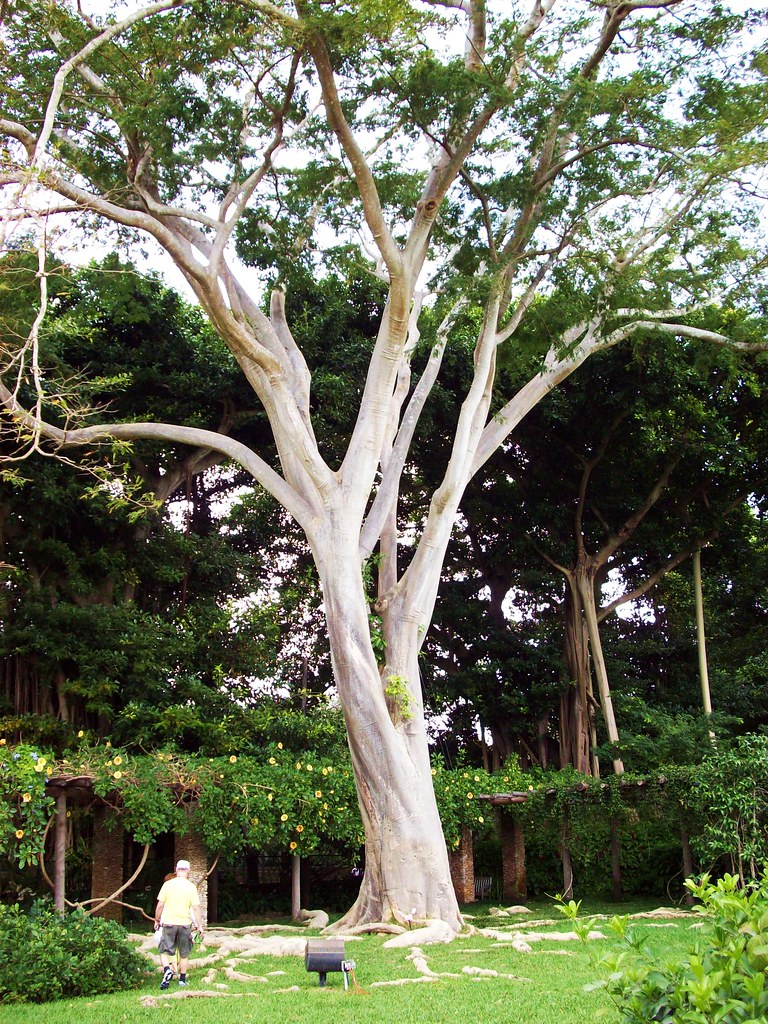
Albizia niopoides roots!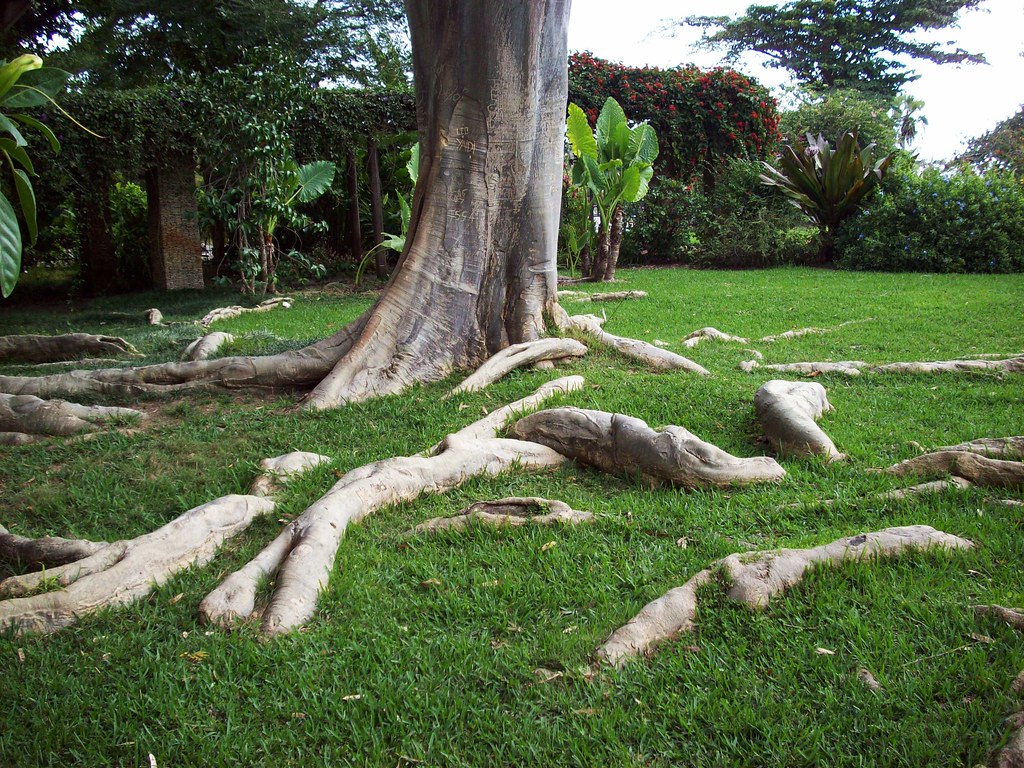
Beautiful hybrid award winners! I regret not writing down the names, next time.
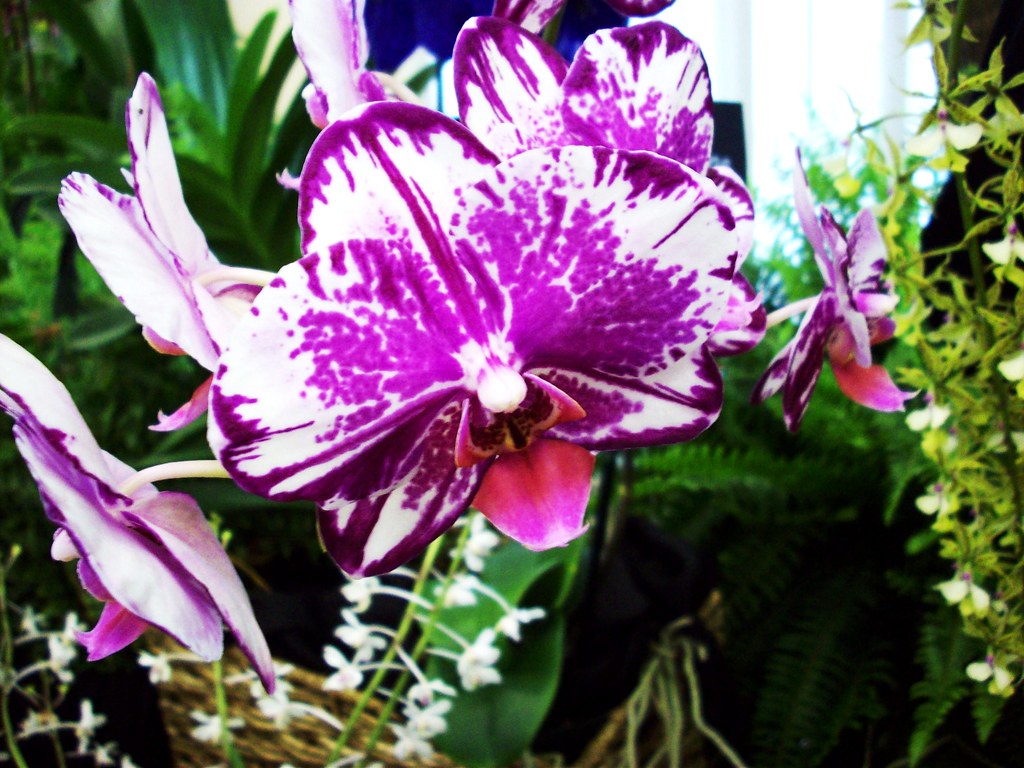
Ren. philippinesis x kaisum Had to buy one of these! And it's already ready to bloom. Pictures to come soon, E.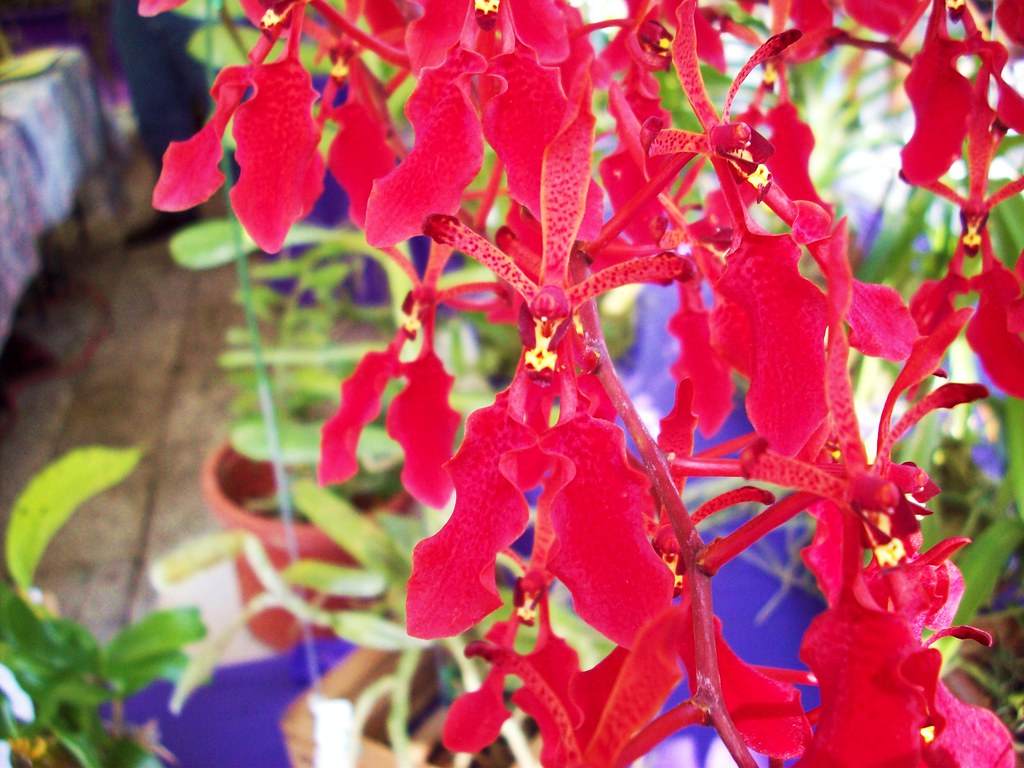
Bulbine frutescens 'Hallmark' love this little groundcover but haven't been able to find it yet.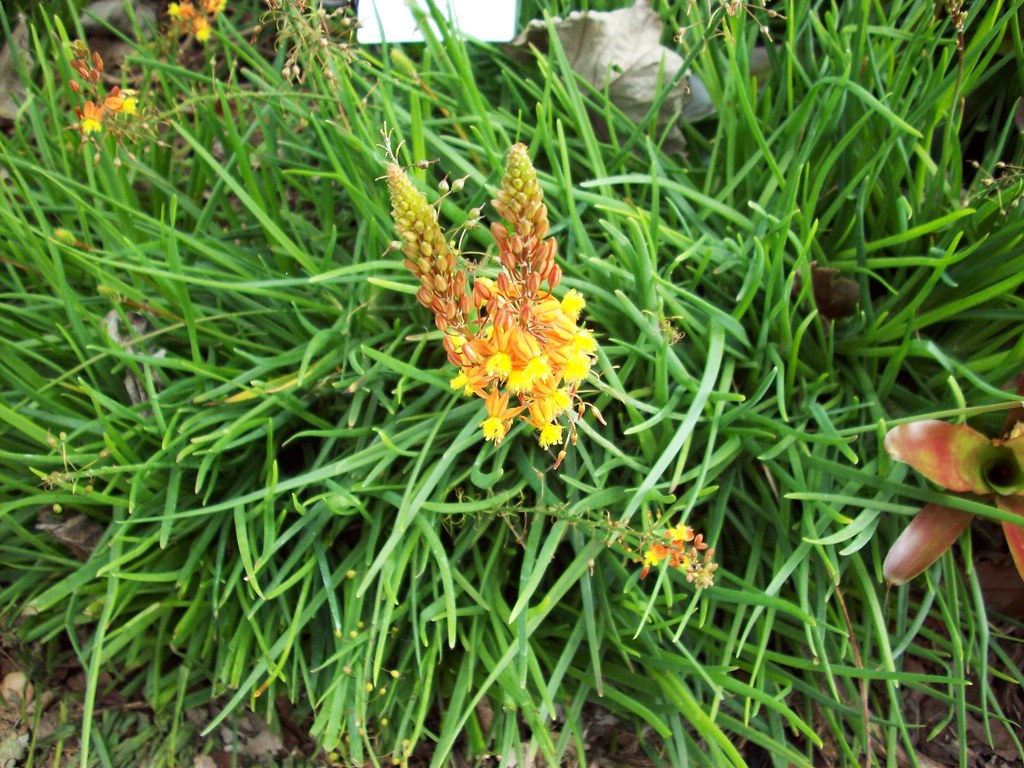
Aechmea sp. 
Golden Chalice Vine Solandra maxima
Golden Chalice Vine Solandra maxima flower close-up.

Photos of Fairchild Tropical Botanic Garden part II by Eric Bronson is licensed under a Creative Commons Attribution-Noncommercial-No Derivative Works 3.0 United States License.
Based on a work at www.flickr.com
Posted by Eric Bronson at 8:00 AM 5 comments
Labels: fairchild
Monday, August 18, 2008
Annona squamosa 'Kampong Mauve'

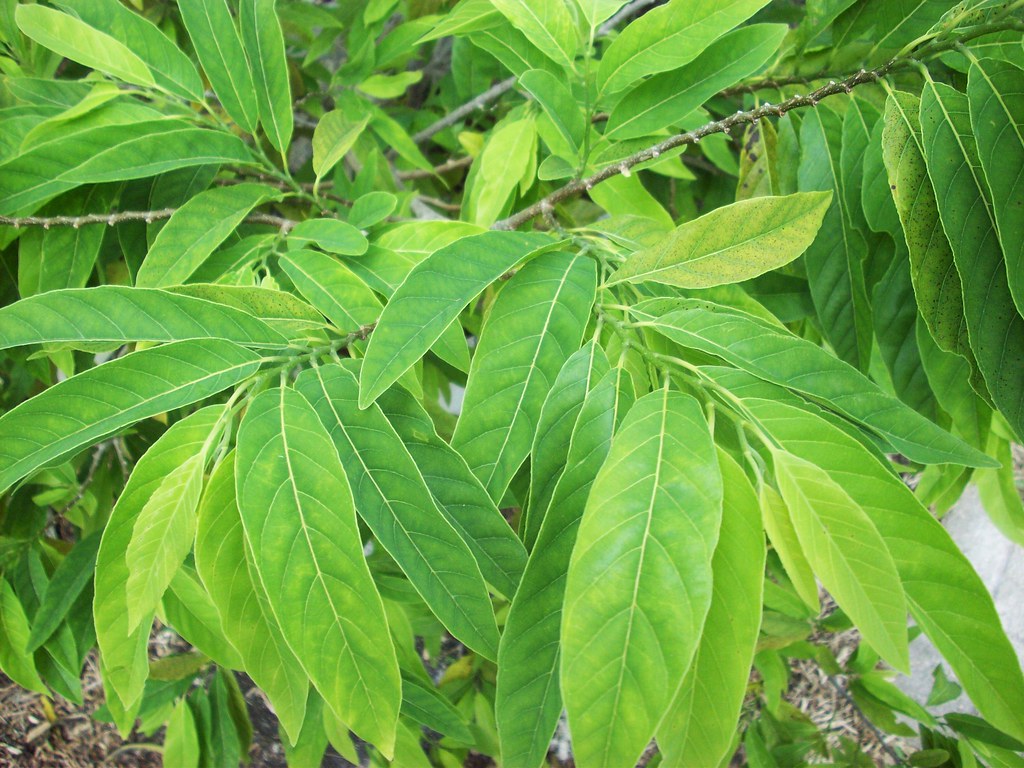
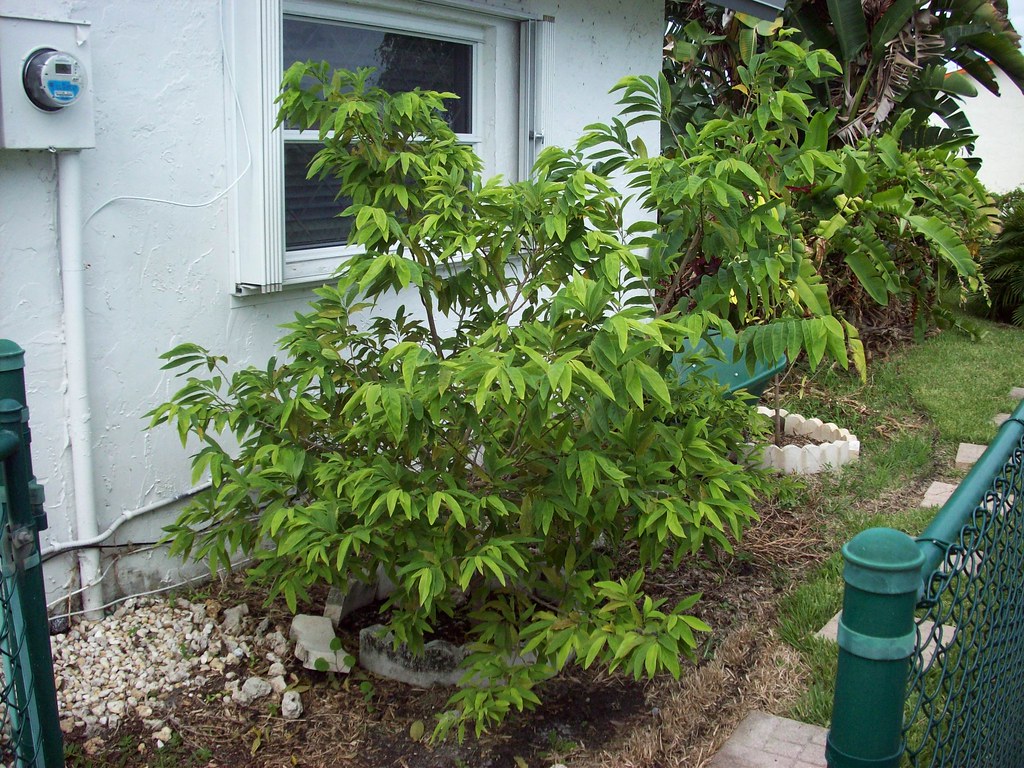
Family: Annonaceae •
Genus: Annona •
Species: squamosa (L.) •
Country of Origin: South America •
Common Names: Sugar Apple, Sweetsop •
I got this at a RFVC plant sale. This rare cultivar has purple/reddish fruits. It is growing on the south side of the house with the Wampee. This fruit has a pear like taste & texture, with a tropical twist. This species doesn't grow more than fifteen to twenty feet high so it's easy to harvest your fruit. The name 'Kampong Mauve' comes from David Fairchild's home the Kampong. This is one of the cultivars he introduced and I'm told one of his favorites.
The Sugar-Apple is more widely disseminated throughout the tropics than any other species of Annona, and in many regions is an important fruit. Particularly is it esteemed in India, where it is extensively grown. P. Vincenzo Maria wrote of it in 1672: "The pulp is very white, tender, delicate, and so delicious that it unites to agreeable sweetness a most delightful fragrance like rose water . . . and if presented to one unacquainted with it he would certainly take it for a Blanc-mange."
The tree is smaller than that of most other species of the genus, its maximum height being 15 to 20 feet. Like the Cherimoya, it is semi-deciduous. The leaves resemble those of A. reticulata except in their smaller size; they are lanceolate or oblong-lanceolate in form, acute or shortly acuminate at the apex and acute at the base, 2 1/2 to 4 inches long, pale green on both surfaces, and glabrate or nearly so, except for the sparsely pubescent petiole.
The flowers, which are produced singly or in clusters of two to four, resemble those of A. reticulata. They are greenish yellow in color, about an inch long, the three outer petals oblong, thick, rounded at the tips; the inner petals minute, ovate.
The fruit is round, heart-shaped, ovate or conical, 2 to 3 inches in diameter, yellowish green, green, pink or purple in color. The surface is tuberculate and covered with a whitish bloom. The pulp is white, custard-like, sweet and slightly acidulous in flavor. The carpels, each of which normally contains a brown seed the size of a small bean, cohere loosely or not at all, the Sugar-Apple differing in this respect from the Cherimoya, in which it is difficult to distinguish carpellary divisions in the flesh. [1]
[1] Manual Of Tropical And Subtropical Fruits | by Wilson Popenoe

Annona squamosa 'Kampong Mauve' by Eric Bronson is licensed under a Creative Commons Attribution-Noncommercial-No Derivative Works 3.0 United States License.
Based on a work at www.flickr.com
Posted by Eric Bronson at 8:00 AM 3 comments
Labels: annonaceae, tropical fruits
Sunday, August 17, 2008
Clausena lansium Wampee
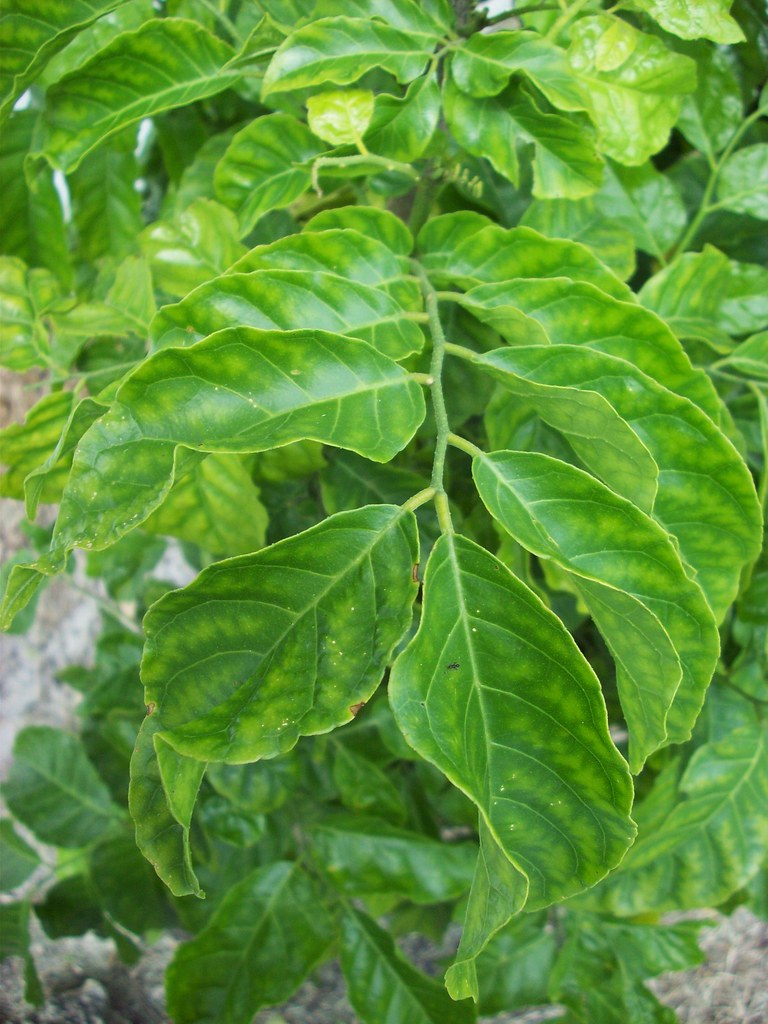
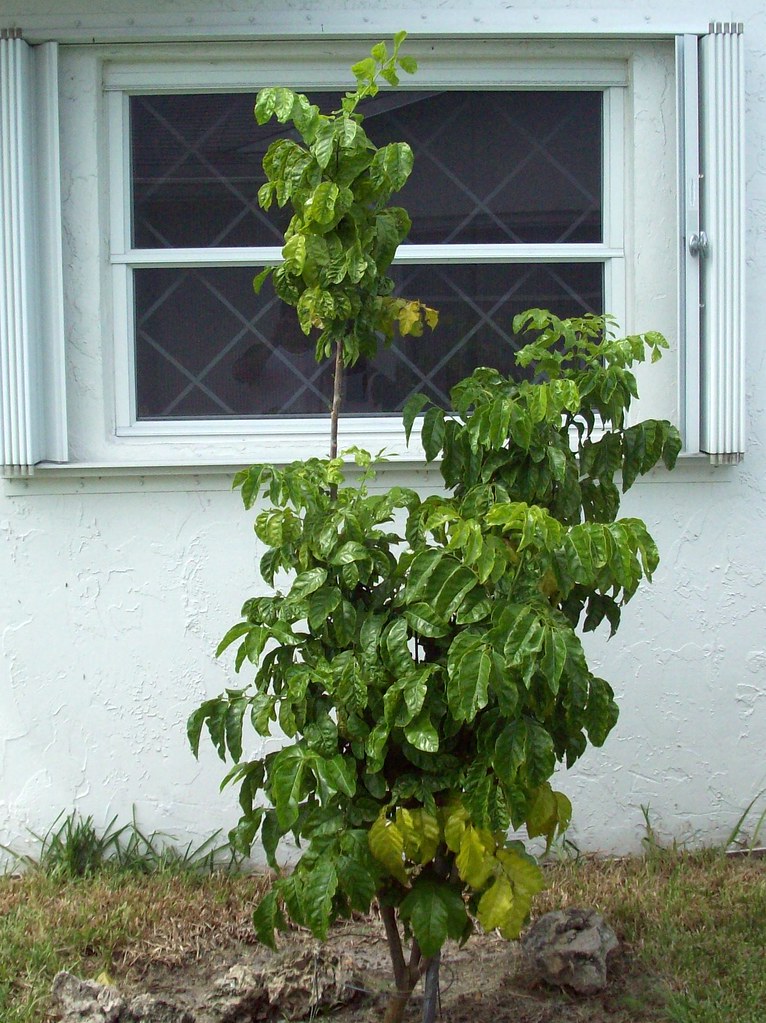

third photo from
Clausena lansium.jpg - 维基百科,自由的百科全书
courtesy of wikipedia
Family: Rutaceae •
Genus: Clausena •
Species: lansium (Skeels) •
Country of Origin: China •
Common Names: Chinese Clausena, Wampee, Wampi, Huang Pi •
I grew this from a seedling my friend Gene from the Rare Fruit & Vegetable Council of Broward (RFVC for short) gave me. It's starting to really take off this year. It is about four years old. I have it growing on the south side of my house where it gets full sun all day. It's fruits are brown grape-like fruits which are tart, sweet and basically delicious! Also, the leaves are hairy and have an odd odor. It originates from China where they have numerous cultivars ranging from sweet to sour.
The tree is fairly fast-growing or rather slow, depending on its situation; attractive, reaching 20 ft (6 m), with long, upward-slanting, flexible branches, and gray-brown bark rough to the touch. Its evergreen, spirally-arranged, resinous leaves are 4 to 12 in (10-30 cm) long, pinnate, with 7 to 15 alternate, elliptic or elliptic-ovate leaflets 2 3/4 to 4 in (7-10 cm) long, oblique at the base, wavy-margined and shallowly toothed; thin, minutely hairy on the veins above and with yellow, warty midrib prominent on the underside. The petiole also is warty and hairy. The sweet-scented, 4- to 5-parted flowers are whitish or yellowish-green, about 1/2 in (1.25 cm) wide, and borne in slender, hairy panicles 4 to 20 in (10-50 cm) long.
The fruits, on 1/4 to 1/2 in (0.6-1.25 cm) stalks, hang in showy, loose clusters of several strands. The wampee may be round, or conical-oblong, up to 1 in (2.5 cm) long, with 5 faint, pale ridges extending a short distance down from the apex. The thin, pliable but tough rind is light brownish-yellow, minutely hairy and dotted with tiny, raised, brown oil glands. It is easily peeled and too resinous to be eaten. The flesh, faintly divided into 5 segments, is yellowish-white or colorless, grapelike, mucilaginous, juicy, pleasantly sweet, subacid, or sour. There may be 1 to 5 oblong, thickish seeds 1/2 to 5/8 in (1.25-1.6 cm) long, bright-green with one brown tip.
excerpt from
http://www.hort.purdue.edu/newcrop/morton/wampee.html
Clausena lansium Wampee by Eric Bronson is licensed under a Creative Commons Attribution-Noncommercial-No Derivative Works 3.0 United States License.
Based on a work at www.flickr.com
Posted by Eric Bronson at 8:18 PM 1 comments
Labels: rutaceae, tropical fruits










